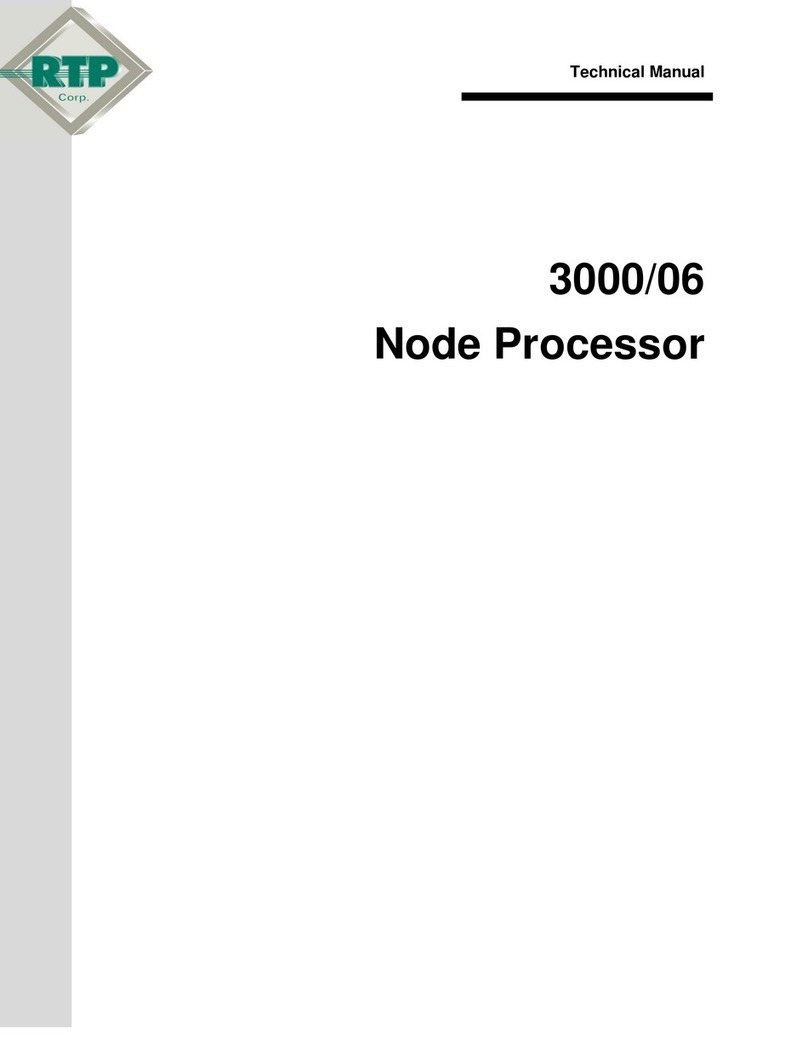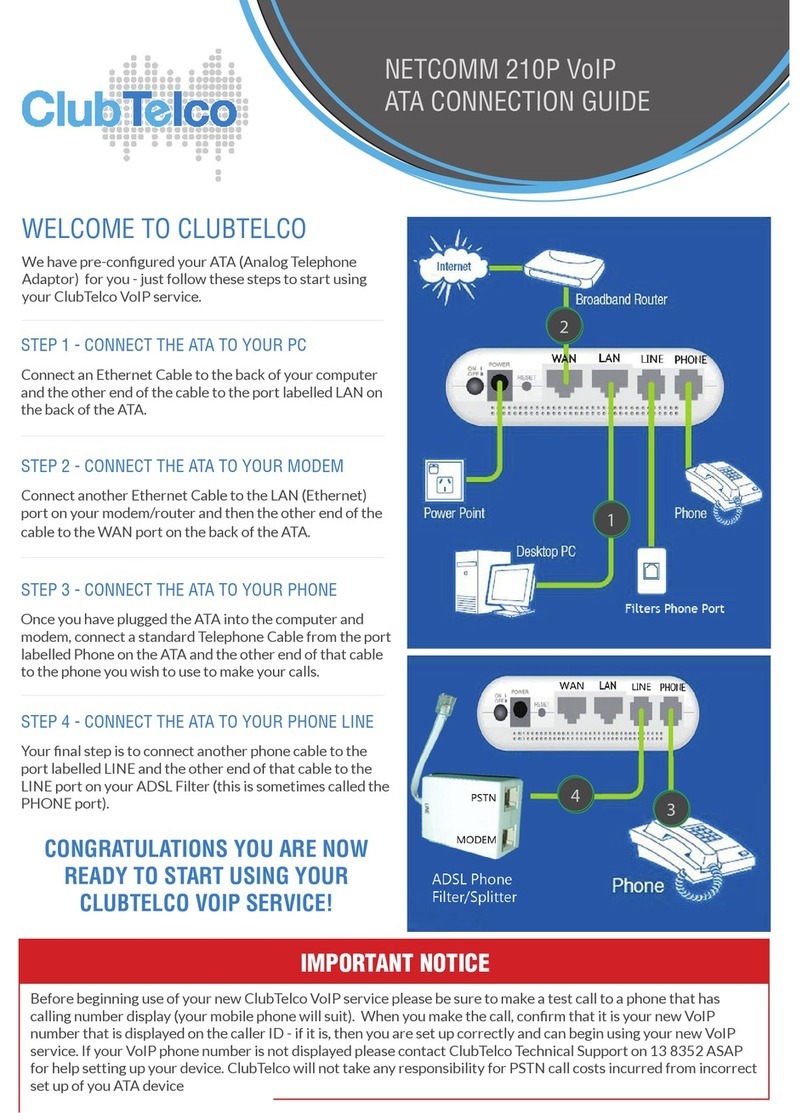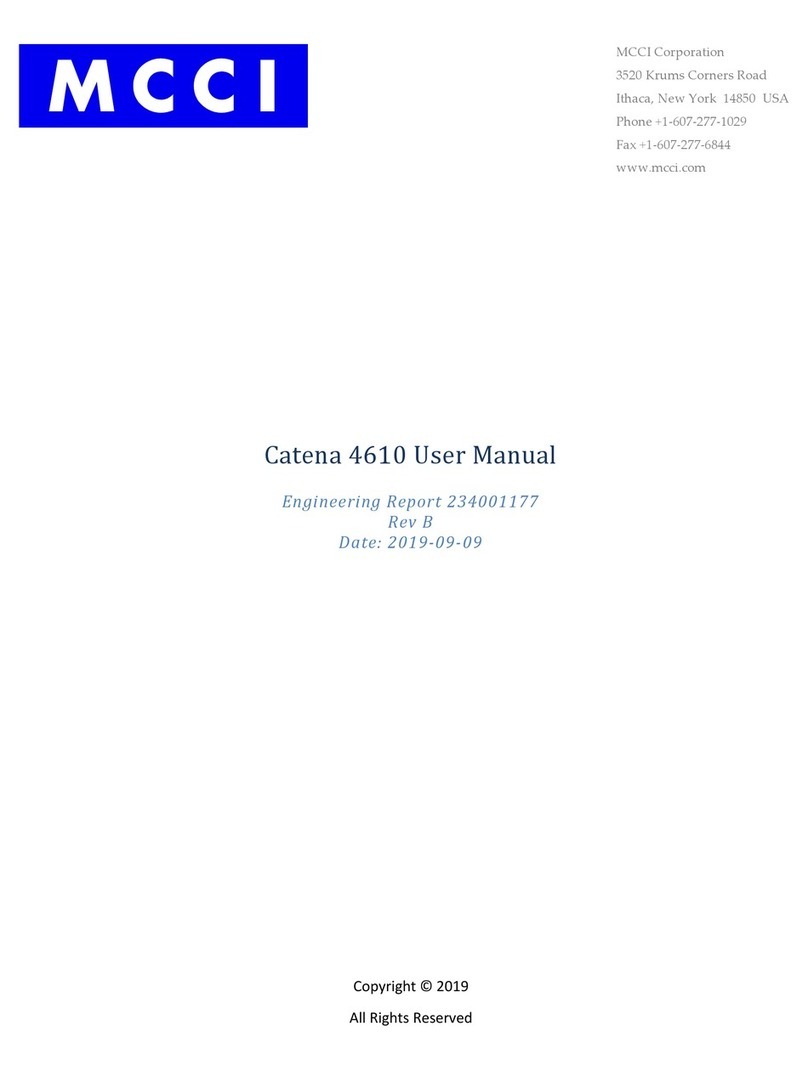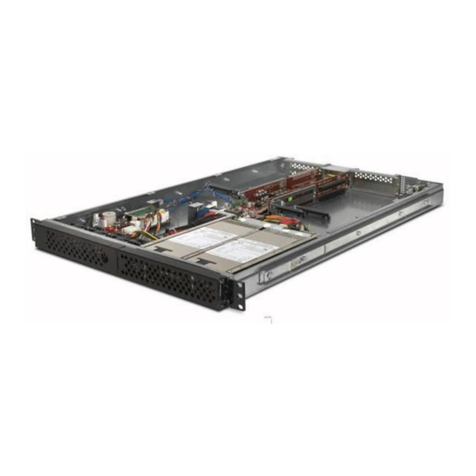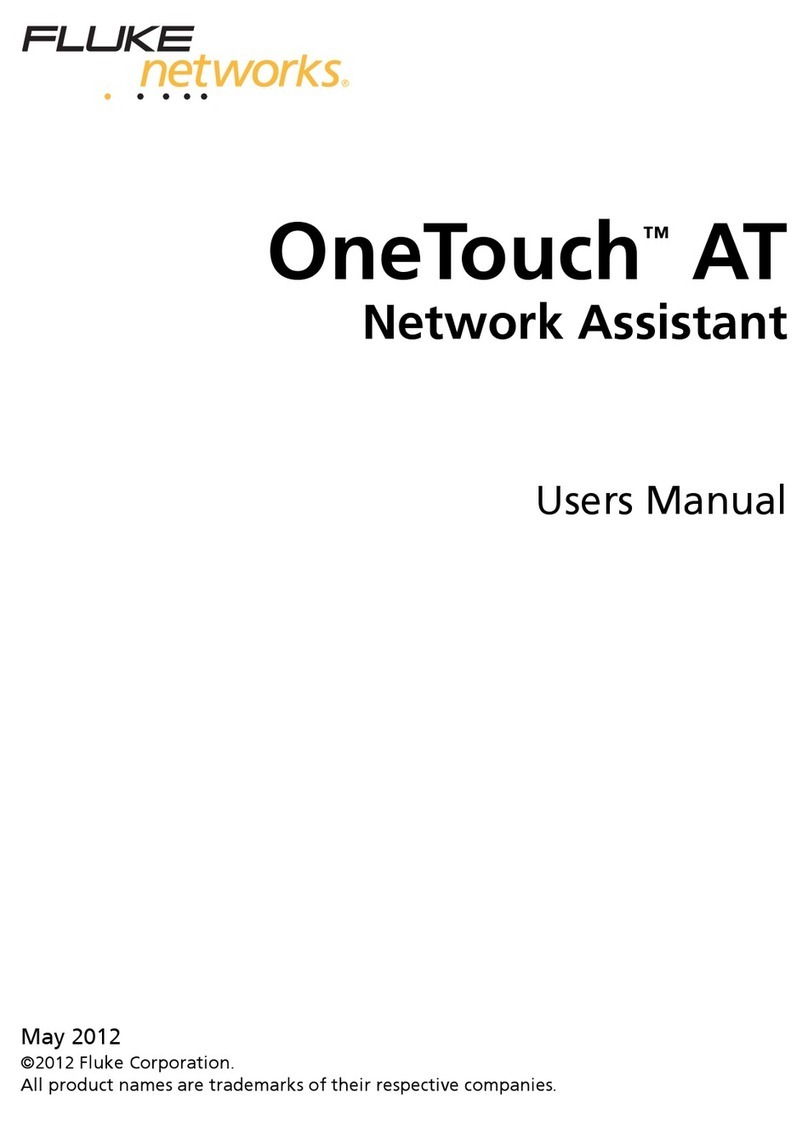Imron Corporation Azure Access BLU-RI2M User manual

Azure Access BLU-RI2M
Hardware Manual
Revision A1
June 10th, 2022
© 2022 IMRON Corporation
All rights reserved. No parts of this work may be reproduced in any form or by any means - graphic, electronic, or
mechanical, including photocopying, recording, taping, or information storage and retrieval systems - without written
permission.
While every precaution has been taken in the preparation of this document, Author assumes no responsibility for errors or
omissions, or for damages resulting from the use of information contained in this document or from the use of programs
and source code that may accompany it. In no event shall the publisher and the author be liable for any loss of profit or any
other commercial damage caused or alleged to have been caused directly or indirectly by this document.

BLU-RI2M Hardware Manual
Downstream 2-Door Reader Interface
by IMRON Corporation

Azure Access BLU-RI2M Hardware Manual
i
2022 IMRON Corporation
This manual contains confidential information and may only be reproduced or distributed with the written consent of IMRON Corporation.
IMPORTANT INFORMATION
W A R N I N G
HIGH VOLTAGE, AC MAIN POWER SHOULD ONLY BE CONNECTED BY QUALIFIED,
LICENSED ELECTRICIANS. ALL APPLICABLE LAWS AND CODES MUST BE FOLLOWED.
IF THIS PRECAUTION IS NOT OBSERVED,PERSONAL INJURY ORDEATH COULD OCCUR
Power should not be applied to the system until after the installation has been completed. If this
precaution is not observed, personal injury or death could occur, and the equipment could be
damaged beyond repair.
-Verify thatthe external circuit breaker which supplies power to the device powersupplyis turned
off prior to installation.
-Verify that the output voltage of the power supply is within specifications prior to connection to
the device.
C A U T I O N
Several important procedures should be followed to prevent electro-static discharge (ESD)
damage to sensitive CMOS integrated circuits and modules.
-All transport of electronic components, including completed reader assemblies, should be in
static shield packaging and containers.
-Handle all ESD sensitive components at an approved static controlled work station. These work
stationsconsist of a desk mat, floor mat and an ESD wriststrap.Workstations are available from
various vendors including the 3M company.
FCC Compliant
This device complies with Part 15 of FCC Rules. Operation is subject to the following two
conditions:
1.This device may not cause harmful interference, and
2.This device must accept any interference received, including interference that may cause
undesired operation.
This equipment has been tested and found to comply with the limits for a Class A digital device,
pursuant to Part 15 of the FCC Rules. Theselimits are designed to provide reasonableprotection
against harmful interference when the equipment is operatedin a commercial environment. This
equipment generates, uses, and can radiate radio frequency energy and, if not installed and
used in accordance with the instruction manual, may cause harmful interference to radio
communications. Operation of this device in a residential area is likely to cause harmful
interference in which case the user will be required to correct the interference at his/her own
expense. The user is advised that any equipment changes or modifications not expressly
approved by the party responsible for compliance would void the compliance to FCC regulations
and therefore, the user's authority to operate the equipment.

Azure Access BLU-RI2M Hardware Manual
ii
2022 IMRON Corporation
This manual contains confidential information and may only be reproduced or distributed with the written consent of IMRON Corporation.
Table of Contents
1
INTRODUCTION..................................................................................................... 1
1.1 General Features......................................................................................................................................1
2
HARDWARE LAYOUT............................................................................................ 2
2.1 Terminal Connectors ................................................................................................................................2
2.2 Jumpers ...................................................................................................................................................5
2.3 LEDs........................................................................................................................................................6
2.4 Dip Switches.............................................................................................................................................7
2.5 Mounting ..................................................................................................................................................8
3
SYSTEM WIRING & SETUP.................................................................................. 9
3.1 Power (TB3).............................................................................................................................................9
3.1.1 Powering Peripherals............................................................................................................................9
3.2 Grounding ................................................................................................................................................9
3.2.1 DC Ground ...........................................................................................................................................9
3.3 Upstream RS-485 Serial Port (TB8)........................................................................................................10
3.3.1 Device Wiring......................................................................................................................................10
3.3.2 Bus Configuration ...............................................................................................................................10
3.3.3 Termination.........................................................................................................................................10
3.3.4 Signal Ground (SG) ............................................................................................................................11
3.4 Unsupervised Cabinet Tamper & Power Fault (TB8)...............................................................................11
3.5 Reader Ports (TB6 & TB7)......................................................................................................................11
3.5.1 TTL Readers.......................................................................................................................................12
3.5.2 RS-485 (OSDP) Readers....................................................................................................................12
3.6 Supervised Alarm Inputs (TB1 & TB2).....................................................................................................13
3.6.1 End of Line (EOL) Termination Resistors ............................................................................................13
3.7 Output Relays (TB4 & TB5) ....................................................................................................................14
3.7.1 Door Strike Wiring...............................................................................................................................15
3.7.2 Auxiliary Output Relay.........................................................................................................................15
3.7.3 Voltage Spike Suppression .................................................................................................................15
3.8 Door / Access Point Setup......................................................................................................................15
3.8.1 Reader................................................................................................................................................16
3.8.2 Door Contact & Exit Pushbutton/REX Inputs .......................................................................................16
3.8.3 Door Strike..........................................................................................................................................16
4
OPERATION..........................................................................................................17
4.1 Firmware................................................................................................................................................17
4.2 Serial COM Configuration.......................................................................................................................17
4.3 Network..................................................................................................................................................17
4.3.1 Web Server.........................................................................................................................................17
4.3.2 Telnet.................................................................................................................................................19
4.3.3 Encryption Configuration.....................................................................................................................19
5
TROUBLESHOOTING..........................................................................................21
5.1 Serial RS-485.........................................................................................................................................21
5.2 Alarm Device Input .................................................................................................................................21
5.3 Output Relays.........................................................................................................................................21
6
SPECIFICATIONS ................................................................................................22
7
REVISION HISTORY............................................................................................24

BLU-RI2M Hardware Manual
© 2022 IMRON Corporation
This manual contains confidential information and may only be reproduced or distributed with the written consent of IMRON Corporation.
1
Part I
Introduction
1 Introduction
The BLU-RI2M is the next generation, downstream reader-interface board. This is a low-profile, RS-485, Ethernet
and PoE+ device that can be installed near or at the door. NOTE: As of this writing, only the RS-485 board is
supported with UniytyIS. It features 2-door control with two independent TTL or OSDP reader ports, supporting 6
supervised inputs, and 4 relay outputs. It is a downstream, serial or network device that requires communication
with a controller (BLU-IC series) to fully function. The board runs an enhanced version of OSDP protocol to
communicate with the controller.
The BLU-RI2M provides interface connections for a variety of card reader technologies, including proximity, smart
card, biometric, bar code, and infrared readers. Card readers with standard Wiegand or Clock/Data output can be
connected to the BLU-RI2M as well as card readers that use OSDP protocol.
1.1 General Features
●Two onboard reader ports for TTL or OSDP readers with paired reader support
●Communication: One 2-wire RS-485 & one 10/100 Ethernet port
●6 Supervised Alarm Inputs
oConfigurable termination resistor values for supervised inputs
●4 Relay Outputs
●Inputs & Outputs fully re-assignable
●One 2-wire RS-485 port for upstream communication
oSupports proprietary or OSDP protocol
●1 Unsupervised Cabinet Tamper Input
●1 Unsupervised Power Fault Input
●1 LED Output per reader port (tri-state control)
●1 Buzzer Output (open collector) per reader port
oBuzzer output can be repurposed for 2-wire LED control
●12 VDC only or PoE+

BLU-RI2M Hardware Manual
© 2022 IMRON Corporation
This manual contains confidential information and may only be reproduced or distributed with the written consent of IMRON Corporation.
2
Part II
Hardware Layout
2 Hardware Layout
Figure 2.1: BLU-RI2M Diagram
2.1 Terminal Connectors
The BLU-RI2M uses terminal blocks for connecting power, readers & door control signals, communications,
supervised alarm inputs, and relay output connections. The connection terminals are factory equipped with
removable screw-down quick connectors which are easily removed from the board by firmly grasping the
connector and pulling away from the board. If pliers are used to remove the connectors, they should be of the
rubber-tipped type. Take care to not damage onboard components when using any tools near the board. The
proper location of the quick connectors is outlined in white on the board.
The SDK allows for any readers, inputs, and outputs to be assigned to any door, but a recommended connection
is listed in parenthesis in the function column.

BLU-RI2M Hardware Manual
© 2022 IMRON Corporation
This manual contains confidential information and may only be reproduced or distributed with the written consent of IMRON Corporation.
3
BLU-RI2M Terminal Connections
Location
Type
Label
Function
(Recommended Connection)
Reader Connections
TB6-1
Ground (Reader
Power)
GND
Reader 2 Device Connections
(Door 2 Reader)
TB6-2
TTL: Data/Data 0
RS485: TR-/B
DAT/
D0
TB6-3
TTL: Clock/Data 1
RS485: TR+/A
CLK/
D1
TB6-4
Beeper
(Buzzer) Control
BZR
TB6-5
Green LED
Control
LED
TB6-6
VDC
(Reader Power)
RVO
TB7-1
Ground
(Reader Power)
GND
Reader 1 Device Connections
(Door 1 Reader)
TB7-2
TTL: Data/Data 0
RS485: TR-/B
DAT/
D0
TB7-3
TTL: Clock/Data 1
RS485: TR+/A
CLK/
D1
TB7-4
Beeper
(Buzzer) Control
BZR
TB7-5
Green LED
Control
LED
TB7-6
VDC
(Reader Power)
RVO
Input Connections
TB1-6
Input 1
IN1
Input 1
(Door 1 Door Contact)
TB1-5
Input 1 Return
IN1G

BLU-RI2M Hardware Manual
© 2022 IMRON Corporation
This manual contains confidential information and may only be reproduced or distributed with the written consent of IMRON Corporation.
4
TB1-4
Input 2
IN2
Input 2
(Door 1 REX/EPB)
TB1-3
Input 2 Return
IN2G
TB1-2
Input 3
IN3
Input 3
(Door 1 AUX Input)
TB1-1
Input 3 Return
IN3G
TB2-6
Input 4
IN4
Input 4
(Door 2 Door Contact)
TB2-5
Input 4 Return
IN4G
TB2-4
Input 5
IN5
Input 5
(Door 2 REX/EPB)
TB2-3
Input 5 Return
IN5G
TB2-2
Input 6
IN6
Input 6
(Door 2 AUX Input)
TB2-1
Input 6 Return
IN6G
Serial Connections
TB8-6
Cabinet Tamper
TMP
Cabinet Tamper & Power Fault
with shared GND
TB8-5
Ground
GND
TB8-4
Power Fault
PFLT
TB8-3
Signal Ground
SG
Serial 2-wire RS-485
TB8-2
Transmit/Receive
Data (-)
TR-
TB8-1
Transmit/Receive
Data (+)
TR+
Relay Output Connections
TB4-6
Normally Open
NO
OUT1 Relay
(Door 1 Strike)
TB4-5
Common
C
TB4-4
Normally Closed
NC

BLU-RI2M Hardware Manual
© 2022 IMRON Corporation
This manual contains confidential information and may only be reproduced or distributed with the written consent of IMRON Corporation.
5
TB4-3
Normally Open
NO
OUT2 Relay
(Door 2 Strike)
TB4-2
Common
C
TB4-1
Normally Closed
NC
TB5-6
Normally Open
NO
OUT3 Relay
(Door 1 AUX Output)
TB5-5
Common
C
TB5-4
Normally Closed
NC
TB5-3
Normally Open
NO
OUT4 Relay
(Door 2 AUX Output)
TB5-2
Common
C
TB5-1
Normally Closed
NC
Power Connections
TB3-4
AUX Power Output
VO
12 Vout AUX Power
Connection
TB3-3
Ground
GND
TB3-2
Input Power
VIN
12 Vin Power Input
Connection
TB3-1
Ground
GND
Table 2.1: BLU-RI2M Terminal Connections
2.2 Jumpers
Figure 2.2: BLU-RI2M Jumpers

BLU-RI2M Hardware Manual
© 2022 IMRON Corporation
This manual contains confidential information and may only be reproduced or distributed with the written consent of IMRON Corporation.
6
JUMPER
SETTING
DESCRIPTION
J1
ON/OFF
RS485 termination - Serial Port (UPSTREAM
COM)
J3
Labeled
PoE VIN
PoE VIN
12-24V DC/DC Power supply. DEFAULT
PoE VIN
PoE (Power over Ethernet) power source
J4
ON/OFF
RS485 termination - Reader Port 2 (RDR2)
J5
ON/OFF
RS485 termination - Reader Port 1 (RDR1)
Note: RS485 termination jumpers (J1, J4, & J5) are shipped from the factory in the OFF (termination
disengaged) position. Only turn ON termination if the RI2M is at the end of the serial bus.
2.3 LEDs
The BLU-RI2M has 19 LEDs for use in monitoring panel functions and diagnosing issues.
HB
Heartbeat & Offline / Online status
Offline: 200ms ON, 800ms OFF
Online & Unencrypted: 800ms ON, 200ms OFF
Online & Encrypted: 0.1 sec ON, 0.1 sec OFF, 0.1 sec ON, 0.1 sec OFF, 0.1
sec ON, 0.1 sec OFF, 0.1 sec ON, 0.3 sec OFF
COM
RS-485 Serial Port –Flashes when data is received
TMP
Cabinet Tamper –ON when in ALARM, OFF when SECURE. See Note 1
PFLT
Power Fault –ON when in ALARM, OFF when SECURE. See Note 1
RDR1
Reader Port 1 –OSDP Reader: Always ON
Wiegand Reader: Flashes ON when receiving data
RDR2
Reader Port 2 –OSDP Reader: Always ON
Wiegand Reader: Flashes ON when receiving data
Alarm Zone Inputs LEDs
IN1
Input IN1 Status: OFF = Secure, ON = Alarm, Flash = Fault. See Note 1
IN2
Input IN2 Status: OFF = Secure, ON = Alarm, Flash = Fault. See Note 1
IN3
Input IN3 Status: OFF = Secure, ON = Alarm, Flash = Fault. See Note 1
IN4
Input IN4 Status: OFF = Secure, ON = Alarm, Flash = Fault. See Note 1
IN5
Input IN5 Status: OFF = Secure, ON = Alarm, Flash = Fault. See Note 1
IN6
Input IN6 Status: OFF = Secure, ON = Alarm, Flash = Fault. See Note 1
Output Relays
K1
Relay OUT 1 (K1): ON = Energized
K2
Relay OUT 2 (K2): ON = Energized
K3
Relay OUT 3 (K3): ON = Energized
K4
Relay OUT 4 (K4): ON = Energized
Ethernet –P1
Speed (left side)
Green: OFF = 10Mbps, ON = 100Mbps
Link (right side)
Yellow: flashing –network activity
PoE Power
PoE PWR
ON = PoE power available (Power over Ethernet)
Note 1: Every 4 seconds the LED is pulsed to its opposite state for 0.1 seconds

BLU-RI2M Hardware Manual
© 2022 IMRON Corporation
This manual contains confidential information and may only be reproduced or distributed with the written consent of IMRON Corporation.
7
2.4 Dip Switches
DIP Switch Functions
The BLU-RI2M has 12 DIP switches. These switches are used to set various configuration options.
Communications Address
Sets this device’s address on the RS-485 bus.
Address must be unique for each device on a
single RS-485 communications line.
1
2
3
4
5
Address
OFF
OFF
OFF
OFF
OFF
0
ON
OFF
OFF
OFF
OFF
1
OFF
ON
OFF
OFF
OFF
2
ON
ON
OFF
OFF
OFF
3
OFF
OFF
ON
OFF
OFF
4
ON
OFF
ON
OFF
OFF
5
OFF
ON
ON
OFF
OFF
6
ON
ON
ON
OFF
OFF
7
OFF
OFF
OFF
ON
OFF
8
ON
OFF
OFF
ON
OFF
9
OFF
ON
OFF
ON
OFF
10
ON
ON
OFF
ON
OFF
11
OFF
OFF
ON
ON
OFF
12
ON
OFF
ON
ON
OFF
13
OFF
ON
ON
ON
OFF
14
ON
ON
ON
ON
OFF
15
OFF
OFF
OFF
OFF
ON
16
ON
OFF
OFF
OFF
ON
17
OFF
ON
OFF
OFF
ON
18
ON
ON
OFF
OFF
ON
19
OFF
OFF
ON
OFF
ON
20
ON
OFF
ON
OFF
ON
21
OFF
ON
ON
OFF
ON
22
ON
ON
ON
OFF
ON
23
OFF
OFF
OFF
ON
ON
24
ON
OFF
OFF
ON
ON
25
OFF
ON
OFF
ON
ON
26
ON
ON
OFF
ON
ON
27
OFF
OFF
ON
ON
ON
28
ON
OFF
ON
ON
ON
29
OFF
ON
ON
ON
ON
30
ON
ON
ON
ON
ON
31
Table 2.1: BLU-RI2M DIP Switch Settings
DIP RS485 Config Override
Select if OSDP cmds are accepted to set baud
and address
8
Accept OSDP cmds to set baud/address
OFF
Do not accept OSDP cmds to set baud and
address and instead honor DIP switch settings
ON
Network Configuration
(not supported at this time)
9
Use user config
OFF
Use default config
ON
Default Network Login
Disable or Enable default login
(not supported at this time)
10
Disable Default Login
OFF
Enable Default Login
ON
FACT/OSDP Key Reset
11
Power up board with switch ON and all LEDs
blink 50ms ON, 50ms OFF, repeating for 3
seconds. If the switch is turned OFF then ON
within the 3 seconds, the board performs factory
reset including wiping out custom OSDP keys.
Toggling this DIP switch during normal operation
does nothing.
Toggle
Reserved
12
X
OFF
Baud Rate (Upstream RS-485 Port)
Note: The baud rate must be the
same for every device on this port.
6
7
9600 Baud
OFF
OFF
38400 Baud
ON
OFF
57600 Baud
OFF
ON
115200 Baud
ON
ON

BLU-RI2M Hardware Manual
© 2022 IMRON Corporation
This manual contains confidential information and may only be reproduced or distributed with the written consent of IMRON Corporation.
8
2.5 Mounting
Eight holes are provided for mounting the BLU-RI2M. Mount at least 0.25 inches above the conductive surfaces.
One mounting hole is plated for connecting to Chassis (Earth) ground.
Figure 2.3: BLU-RI2M Mounting Holes [inches (mm)]
The BLU-RI2M also has an optional, metal mounting bracket with standoffs for installation in a triple-gang box

BLU-RI2M Hardware Manual
© 2022 IMRON Corporation
This manual contains confidential information and may only be reproduced or distributed with the written consent of IMRON Corporation.
9
Part III
System Wiring & Setup
3 System Wiring & Setup
This section will provide installation and wiring instructions as well as hardware interface information as it
applies to the access control system. To guard personal safety and avoid damaging equipment it is important
to have a full understanding of electrical wiring best-practices and safety. The following sections provide
general guidelines relating to the BLU-RI2M, but are not a substitute for formal training in safely handling
electrical systems!
3.1 Power (TB3)
DC/DC
Take care when selecting a power supply for use with the BLU-RI2M. Most power supplies on the market
today provide good input/output isolation, however those which do not provide isolation (or have high leakage
capacitance), coupled with accidental AC power line interchange, presents serious ground fault problems for
installers. With ground fault, the signal reference between subsystems may be 115 Vac (230 Vac) apart. If
these subsystems are interconnected, the large potential difference will cause equipment damage orpersonal
injury. Azure Access recommends the use of isolated continuous power from supplies only.
In the case of over-current, solid-state fuses integrated on the BLU-RI2M panel will ‘trip’ to protect the
components of the panel. In many cases, the solid-state fuses will reset automatically when normal current
resumes, however itmay be necessary to interrupt the supply of power to allow the fuses to reset.
3.1.1 Powering Peripherals
The BLU-RI2M has multiple output ports for distributing power to peripheral devices. Each port has its own
voltage and current specs and have overcurrent protection.
The installer must adhere to overall current maximums of the power supply, whether PoE or DC/DC from the
wall. Detailed electrical specs are located in the “Specifications” section of this document (section 6).
To maximize longevity, it is not recommended to fully load all peripheral power ports when operating at the
top of the operating temperature range.
Auxiliary Output Power “VO” (TB3 – pin 4)
The VO port can be used to power peripheral devices such as strikes, IO modules, readers, etc. This port is
a direct passthrough from the primary power VIN (same voltage as VIN), whether using PoE or wall supply.
This port has a 1 Amp current maximum.
Reader Port Power “RVO” (TB6 – pin 6) & (TB7 –pin 6)
Readers can be powered directlyfrom the two readerports. Each port hasa maximum current rating of500mA.
3.2 Grounding
3.2.1 DC Ground
This is typically the minus (-) side of the DC output of the power supply. It is to be connected to the DC ground
input of all devices being powered by one supply. It must not be connected in any way to any of the RS-485
signals or the AC side of the line including Safety (Earth) ground.
Note: AC Ground (“Safety” / “Earth” / “Chassis” Ground)
To avoid ground loop current, there must be only ONE point at which the AC ground connects to the DC

BLU-RI2M Hardware Manual
© 2022 IMRON Corporation
This manual contains confidential information and may only be reproduced or distributed with the written consent of IMRON Corporation.
10
ground (usually through the DC/DC power supply). The plated, “chassis” mounting hole should be electrically
connected the conductive surface of the mounting plate or enclosure.
3.3 Upstream RS-485 Serial Port (TB8)
RS-485 is an electrical interface standard for multi-point communication on bus transmission lines. It allows
high speed data transfer over extended distance (4000ft, 1219m). An RS-485 Serial Bus is a typical
connection for field devices (such as the BLU-RI2M) to a controller. The BLU-RI2M is a client node device on
the bus that responds to communications from the controller.
3.3.1 Device Wiring
2-wire RS-485 consists of three wires; TR+, TR-, & SG (signal ground). Both TX and RX are done on the
same pair of wires. Match the polarities; connect positive (+) to positive and negative (-) to negative. Wiring
recommendation of 24 AWG, shielded twisted-pair. Wiring requirements satisfied by Belden 9841 or
equivalent.
3.3.2 Bus Configuration
The maximum number of field devices on one RS-485 communications bus is 32. Communication cables for
RS-485 should be laid out in a "multi-drop topology". This means that there should only be two ends to the
line and devices should be located directly along this line. The BLU-RI2M can be located at any point along
the line. Long stubs (T connection) and Star Topology will cause communication problems and must be
avoided. Each field device must have a unique address, and all the devices must use the same baud rate. All
devices on the RS-485 bus must be communicating with the same protocol.
Serial Bus Topology (Main node in Middle) - Correct
Serial Bus Topology (Main node at End) - Correct
“Star” Topology - Incorrect
“T stub” Topology - Incorrect
Figure 3.1: RS-485 Bus Topologies
3.3.3 Termination
For the most reliable communications, the RS-485 bus must be terminated at both ends. The terminators are
integrated on the board and are engaged via user installed jumpers. Never engage termination of devices in
the middle of the communication bus.

BLU-RI2M Hardware Manual
© 2022 IMRON Corporation
This manual contains confidential information and may only be reproduced or distributed with the written consent of IMRON Corporation.
11
External termination modules (ATM-48) are not required but can be used. If using the ATM-48 termination
module, DO NOT install the jumpers on the board. The wiring is as follows:
ATM-48 Pin 1 -> TR+
ATM-48 Pin 2 -> TR-
3.3.4 Signal Ground (SG)
When devices are powered from different power supplies, a common ground reference must be established
on the RS-485 bus. This is the ground (GND) connection on the Serial port connector. Failure to have a
common ground between devices may cause communication errors. If connecting the RS-485 bus with
shielded wire, the shielding can be used as the signal ground connection. Or, if the environment is known to
be electrically noisy, the wire’s shield can be connected to safety/chassis/Earth ground and a separate wire
can be used for signal ground.
Grounding Potential Difference Checks Before Connecting
Before a device is connected to an RS-485 subsystem, it must be checked for ground fault. Ground faults can
damage all devices connected to the RS-485 communication line. To check if there is ground fault for a new
unit, follow the steps below:
1. Apply power to all devices already successfully connected to the RS-485 line.
2. Power up the new unit, but DO NOT connect it to the RS-485 line.
3. Connect the signal ground (SG) of the RS-485 line through a 10k limiting resistor.
4. Measure the AC and DC voltage across the resistor. There should NOT be more than 1 volt across the
resistor. Otherwise find and clear the fault.
5. Connect the new unit to the RS-485 line only if no ground fault is found.
3.4 Unsupervised Cabinet Tamper & Power Fault (TB8)
The cabinet tamper (TMP) and power fault (PFLT) inputs only support unsupervised configurations. The
cabinet tamper input is wired to the enclosure and detects when the enclosure door is opened and closed.
The power fault input is wired to the power supply and detects when there is an issue with the power supply.
Wire these inputs with 24 AWG minimum. See “Unsupervised” in Section 3.6.1 wiring diagram.
Note: Even though PFLT and TMP share a GND connection, both inputs will report separately during normal
operation. However, if the shared GND connection comes loose, both a PFLT and TMP alarm will be reported
simultaneously.
Figure 3.2: Cabinet Tamper & Power Fault Wiring
3.5 Reader Ports (TB6 & TB7)
The BLU-RI2M has two onboard reader ports that support both TTL (Wiegand, Clock & Data, etc) and RS-

BLU-RI2M Hardware Manual
© 2022 IMRON Corporation
This manual contains confidential information and may only be reproduced or distributed with the written consent of IMRON Corporation.
12
485 (OSDP) readers. The RS-485 reader bus is a true RS-485 port, meeting all requirements of the electrical
standard.
PIN
DESCRIPTION
GND
Ground connection for the reader
DAT/D0 & CLK/D1
TTL or RS-485 reader data connections (see 3.5.1 and 3.5.2 below).
BZR
Open-collector buzzer output. Can also be used for 2-wire LED control
LED
Tri-state LED signal
RVO
Reader power; jumper selectable to either be VIN passthrough or a
regulated 12VDC
3.5.1 TTL Readers
Each reader port on the BLU-RI2M can support one TTL reader. TTL readertypes includeWiegand, magnetic
stripe, proximity, bar code, smart card, biometric, keypad, etc. A different type of reader can go on each port.
TTL readers usually utilize all pins on the reader port. The wiring to a TTL reader should be made using 24
AWG minimum, shielded cable with 6 conductors (Belden 9536 or equivalent). Do not exceed 500 feet (152
m) between the BLU-RI2M and reader. 18 AWG cable may be required for long cable lengths or for large
current requirements. If twisted pair cable is used, do not wire Data 1/Clock and Data 0/Data in the same pair.
Connect the shield drain wire of the cable at the GND terminal of the appropriate reader connector on the
BLU-RI2M. Carefully insulate the drain wire with sleeving for a reliable installation.
Power for each reader port is provided through the “RVO” pins. Power supplied on RVO is a passthrough of
VIN (12 VDC).Each reader port can supply 500mA. If the readers have agreater total power requirement, or
if there are other wiring concerns, external power supplies should be used to power the readers. In this case,
only connect the reader power lines to the external power supply; do not connect the reader to two power
supplies.
For basic operation of the reader, at a minimum the Data 1/Clock and Data 0/Data wires must be connected
from the reader to the BLU-RI2M and power supplied to the reader. LED and beeper control lines do not have
to be connected, but in this case, the LED and beeper may not function on the reader.
Figure 3.3: BLU-RI2M TTL Reader Wiring
3.5.2 RS-485 (OSDP) Readers

BLU-RI2M Hardware Manual
© 2022 IMRON Corporation
This manual contains confidential information and may only be reproduced or distributed with the written consent of IMRON Corporation.
13
Both reader ports on the BLU-RI2M can communicate with RS-485 readers; OSDP being the most popular.
The Reader Port is a true RS-485 port meeting TIA-485-A. By default, the firmware allows up to four OSDP
readers which is enough for paired-reader configuration on two doors/access points.
In this section, “OSDP reader” will be used to represent what is really any RS-485 reader. The OSDP protocol
standard expands the functionality of readers by enabling a large (and growing) command set.
OSDP uses a 2-wire interface (transmit and receive on same wires). Always observe polarity of the lines;
connecting positive (+) to positive and negative (-) to negative terminals. The Signal Ground (GND) must be
connected between the readers and the reader port for reliable communications. “Star” wiring or “T stubs”
longer than 10ft must never be used!
Figure 3.4: OSDP Wiring
OSDP connections should be made observing polarity of the lines from the reader.Signal ground
should always be connected.
3.6 Supervised Alarm Inputs (TB1 & TB2)
The BLU-RI2M has 6 Supervised Alarm Inputs. These inputs are multi-purpose and are configured with the
Host software. Any input can be assigned as a door contact, REX, or auxiliary alarm input (i.e.motion or glass-
break sensors).With the use of end-of-line termination resistors, the alarms are monitored for not only secure
and alarm states, but also the detection of fault conditions from tampering and accidental damage.
These alarm inputs can be configured as either “Normally Open” or “Normally Closed” and can also operate
in an Unsupervised mode. Unsupervised configuration does not require any external, end of line resistors.
However, unsupervised mode is the least secure and damage or tampering of the line can go undetected,
resulting in missed or false alarms. The unsupervised configuration should not be used in any situation that
requires security. An example of unsupervised input wiring can be seen in Figure 3.5.
Input wiring requiresminimum 22 AWG up to 1,000ft (304.8m) and a maximum of30 Ohms of loop resistance.
3.6.1 End of Line (EOL) Termination Resistors
Using two End-of-Line (EOL) termination resistors, the Supervised mode can detect fault conditions resulting
from accidental damage or tampering. The BLU-RI2M will not confuse this condition with a valid secure or
alarm condition. For maximum security, the end-of-line termination resistors should be placed at the END of
the cable, farthest away from the BLU-RI2M. There are multiple EOL options, ranging from ready-made
terminal block connectors to individual, hand-placed resistors. The following wiring diagram shows some of
the pre-defined termination resistor configurations. For ease of installation, pre-assembled resistor packs for
termination are available; the ATM-30 is 300/10K Ohms & ATM-3D is 3K/4.5K Ohms.

BLU-RI2M Hardware Manual
© 2022 IMRON Corporation
This manual contains confidential information and may only be reproduced or distributed with the written consent of IMRON Corporation.
14
Figure 3.5: Input Supervision
Supervised inputs can be configured with Host Software to use different EOL resistor combinations.
3.7 Output Relays (TB4 & TB5)
The BLU-RI2M has four output relays onboard. These relays can either control a door strike (lock) or other
electrical device connections or other miscellaneous output control. Relay functions are defined in the Host
software. The onboard relays are capable of switching up to 2A @ 30VDC or 0.5A @ 120VAC.

BLU-RI2M Hardware Manual
© 2022 IMRON Corporation
This manual contains confidential information and may only be reproduced or distributed with the written consent of IMRON Corporation.
15
3.7.1 Door Strike Wiring
A typical electric door strike (lock) will require around 250mA (0.25 Amps) to operate. If the particular locking
device requires more than 2 Amps to control, another external power-switching device/relay of adequate
power rating must be used. Some strikes such as magnetic strikes are inductive loads, in which case is
recommended to derate the relay’s rated current by 50%.
Wiring between the strike power supply, strike relay (internal or external) and the electric lock should be of
sufficient gauge (16 to 18 AWG recommended) to prevent excessive voltage drop under all circumstances.
The strike can be wired in a fail-safe (door unlocks on power outage) or fail-secure (door locks on power
outage) manner by using either the Normally Closed (NC) or Normally Open (NO) relay contacts.
3.7.2 Auxiliary Output Relay
Aside from controlling door strikes, relay outputs can be used for controlling other audible and visual devices.
Auxiliary relay functionality is configured via the Host software.
3.7.3 Voltage Spike Suppression
Due to inductive nature of a door strike, energizing and deenergizing of the relay can cause voltage spikes
across the relay contacts. If no suppression is used to defend against these voltage spikes, communication
problems and permanent damage to the hardware may occur.
Strike Type
Suppression Method
DC Strike
Reverse-biased DIODE with a continuous current rating of at least 1x the strike
current and a breakdown voltage (Vbr) rating of at least 2x the strike voltage. Usually
a 1N4001 –1N4006 will work.
AC Strike
A Metal Oxide Varistor (MOV) will usually be included with the strike. If a MOV does
not come with the strike, contact the strike manufacturer for the appropriate MOV
ratings. Be sure to use a UL approved MOV.
Figure 3.6: Strike Wiring Diagram (DC w/ Diode)
Both DC and AC suppression components are placed identically; across the output device’s electrical
terminals.
3.8 Door / Access Point Setup
An Access Point (sometimes referred to simply as “Door”) is the grouping of at least one reader, supervised
inputs, and relay outputs to yield full control and monitoring of a door/entryway. A “complete” Access Point
consists of at least one reader, two supervised inputs (for door contact and REX), and one relay output
controlling the door strike. The BLU-RI2M supports 2 complete Access Points with onboard interfaces.
Configuration and assignment of the Access Point’s interfaces is done through the Host software.
Recommended connections are listed in the Terminal Block table in section 2.

BLU-RI2M Hardware Manual
© 2022 IMRON Corporation
This manual contains confidential information and may only be reproduced or distributed with the written consent of IMRON Corporation.
16
Figure 3.7: Door / Access Point Wiring
3.8.1 Reader
An Access Point needs at least one reader to receive credentials. The BLU-RI2M supportsboth TTL and RS-
485 (OSDP readers). Access Points can also use two readers in a “paired” configuration.
3.8.2 Door Contact & Exit Pushbutton/REX Inputs
The door contact input is a normally closed input used to monitor the position of the door (open or closed).
This will typically be connected to a magnetic sensor in the frame of the door that will provide a short circuit
when the door is closed and an open circuit when the door is opened. Door Contact inputs are required for
features that require knowledge of door usage; such as Anti-Passback, Door Forced / Held Open, and more
precise strike timing.
The Exit Pushbutton, sometimes referred to as a REX (Request-to-Exit/Enter) input, is a Normally Open input
that is used to inform the Access Point the door needs to, or will be opening without an access request being
made with a user’s credential (card, pin, etc). It is usually in the form of a pushbutton, but it could also be in
the form of a motion sensor or other user-activated sensor. Note that different types of sensors will require
different strike timing calibrations.
If input supervision is enabled (see Part 3.6.1 above), end of line (EOL) terminating resistors must be installed.
The terminating resistors should be installed as close to sensor (away from the BLU-RI2M) as possible.
3.8.3 Door Strike
Door strikes come in a variety of different styles. They can come in different voltages (both AC and DC), and
can operate in a Fail-Secure or Fail-Safe manner. The most common voltages are 12 & 24 Volts. A Fail-Safe
door uses electrical current to keep the strike locked; meaning in the case of power failure, the strike will
default toan unlocked state. A Fail-Secure strike uses electricalcurrent tounlockthe door;meaning in apower
failure situation, the door will default to a locked state.
Table of contents
Popular Network Hardware manuals by other brands
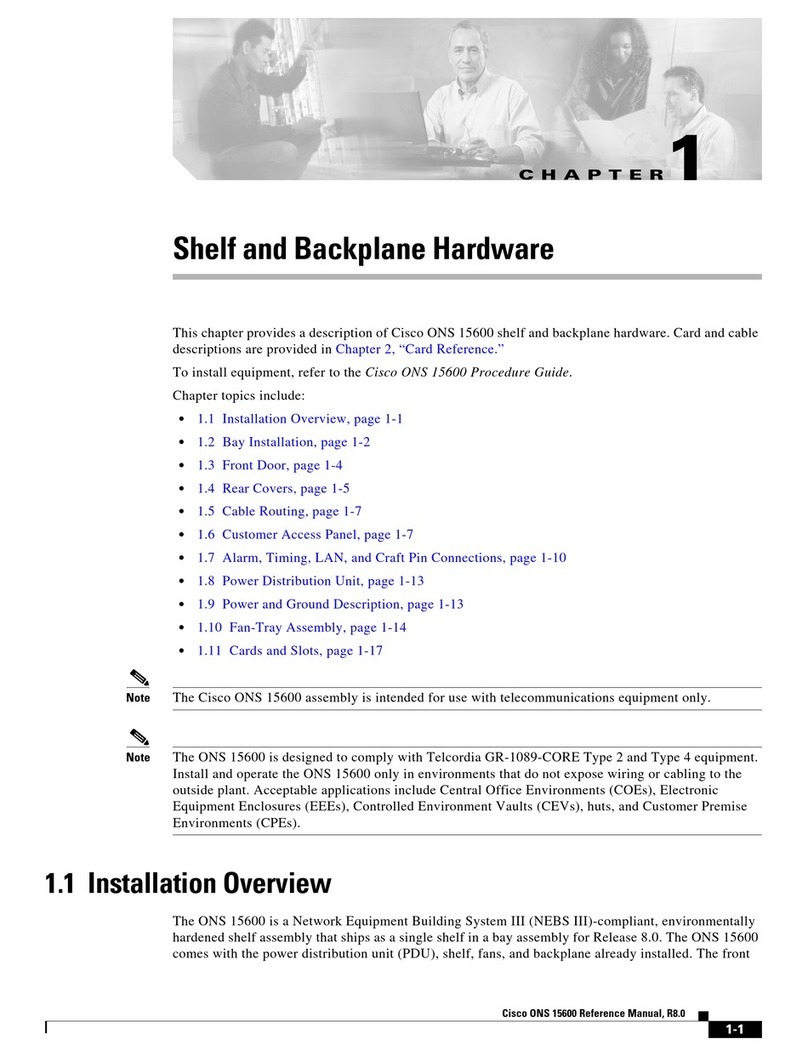
Cisco
Cisco ONS 15600 Reference manual
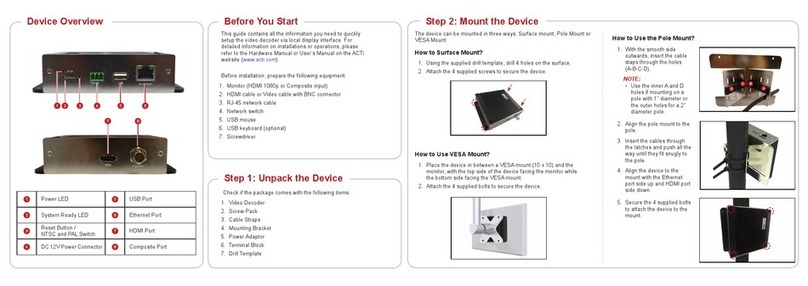
ACTi
ACTi ECD-1000 Quick installation guide
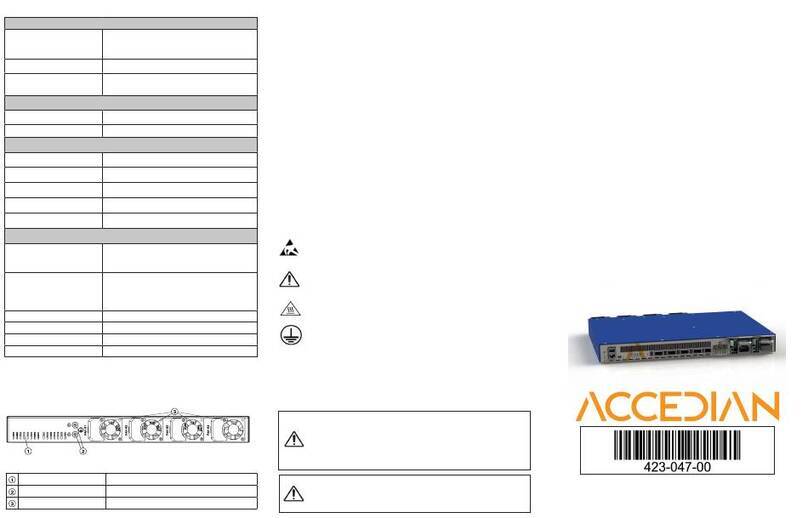
Accedian
Accedian Skylight Flex 100 Hardware installation guide
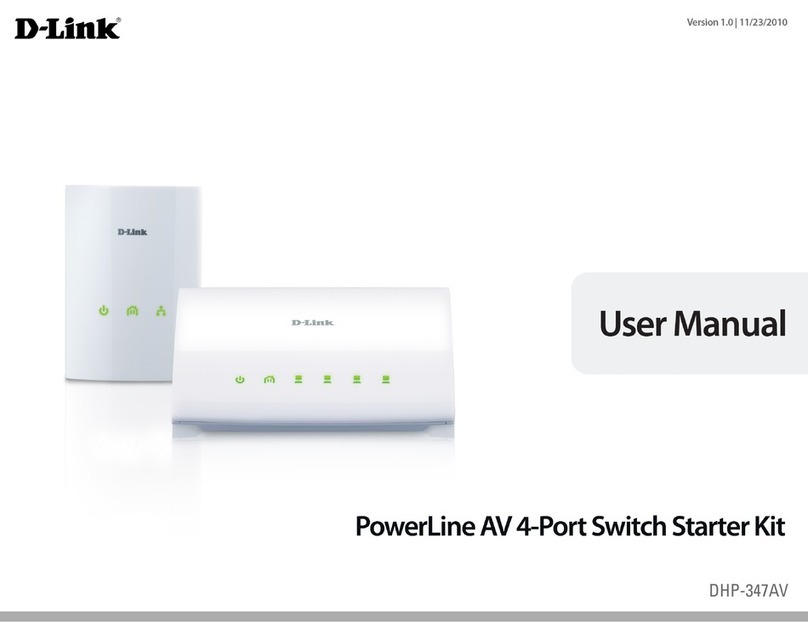
D-Link
D-Link DHP-347AV user manual

Cisco
Cisco Linksys Business Series Network Storage System... Getting started guide
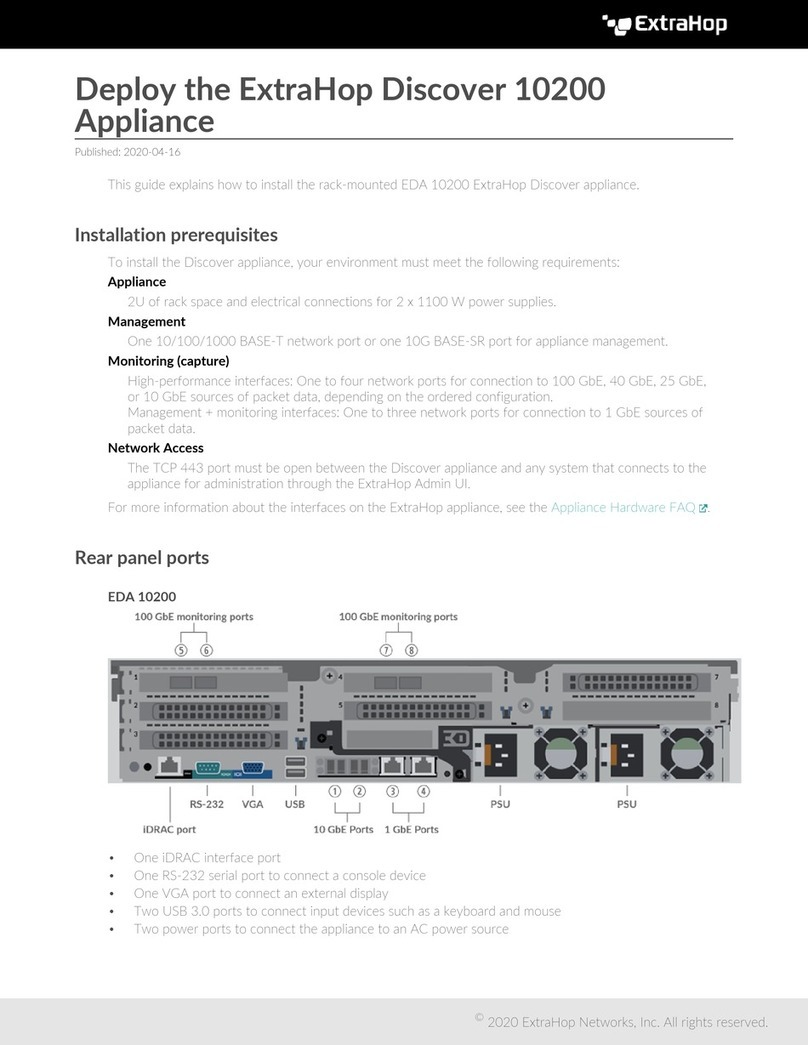
ExtraHop
ExtraHop EDA 10200 Quick Deploy Guide

Chatsworth Products
Chatsworth Products RIM-750 quick start guide

Ubiquiti
Ubiquiti UF-Instant quick start guide
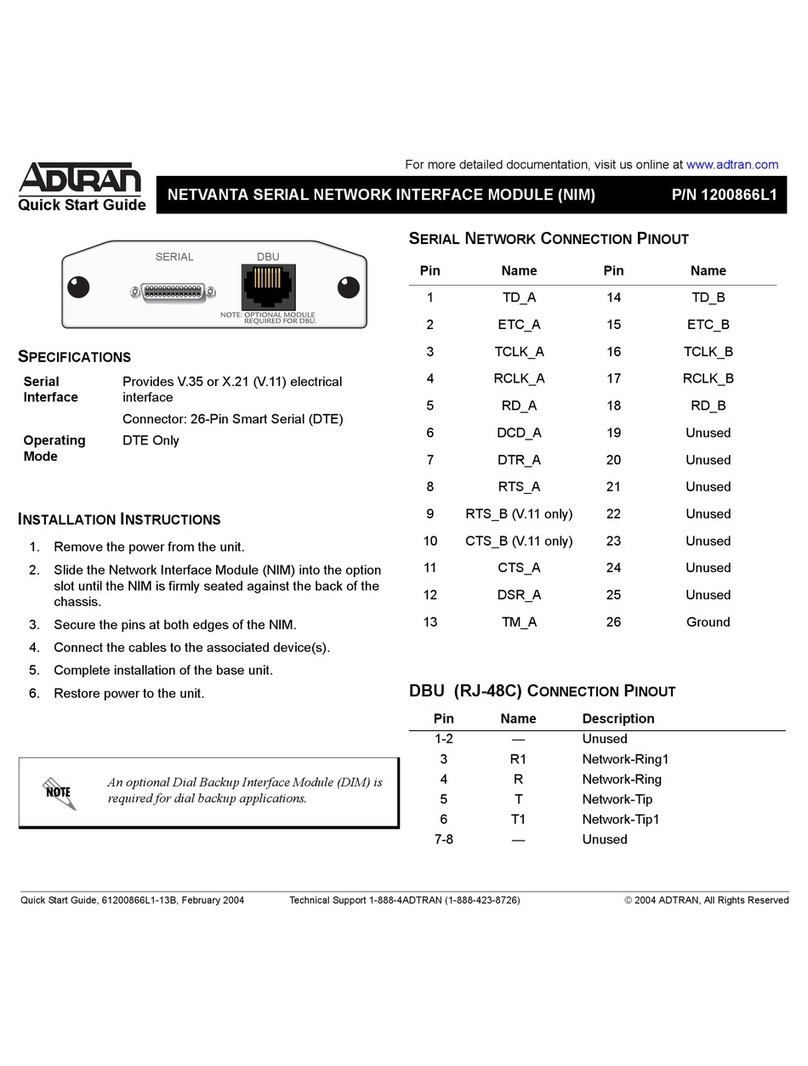
ADTRAN
ADTRAN NetVanta 8044M quick start guide
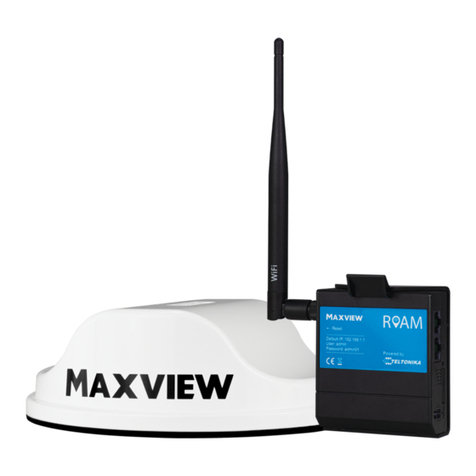
Teltonika
Teltonika Maxview MXL050 Roam Installation & user's instructions

Axiometrix Solutions
Axiometrix Solutions imc EOS manual

IBM
IBM TS4300 user guide

